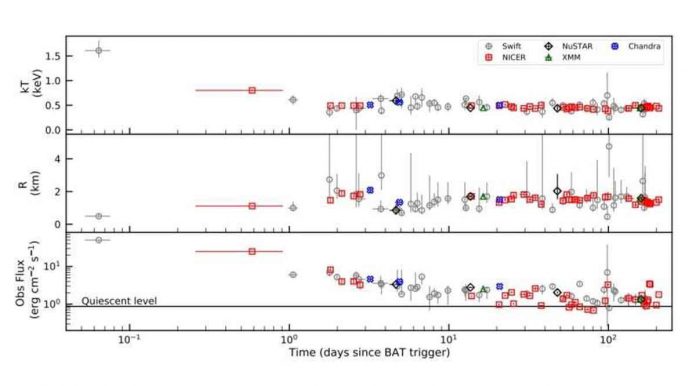European astronomers have conducted a detailed and long-term X-ray monitoring campaign of a magnetar known as SGR J1935+2154. SGR J1935+2154 has entered its active phase and it experienced numerous X-ray outbursts. The study was published on arXiv.org. The study will help us better understand the nature of this magnetar.
Magnetars are neutron stars with extremely strong magnetic fields. These types of stars have more than 1 quadrillion times stronger than the magnetic field of our planet.Decay of magnetic fields in magnetars powers the emission of high-energy electromagnetic radiation like in the form of X-rays or radio waves.
SGR J1935+2154 was detected in 2014 and it is a magnetar with a spin period of 3.25 seconds. It is also a surface dipolar magnetic field at a level of about 220 trillion G at the pole. It is one of the most active magnetars since its discovery. It experienced outbursts in February 2015, May and June 2016.
The latest reactivation of SGR J1935 commenced on April 27, 2020. Then it started to show hundreds of X-ray bursts and a large enhancement of the persistent flux was detected. A team of astronomers led by Alice Borghese of the Institute of Space Sciences (ICE-CSIC) in Barcelona, Spain has begun to monitor this magnetar NASA’s Chandra, Swift and NuSTAR spacecraft, ESA’s XMM–Newton satellite, and NICER instrument on the International Space Station (ISS).
SGR J1935 entered its fifth recorded outburst phase and it made it one of only a few magnetars showing recurrent outbursts and frequent bursting activity. This phase included a remarkable X-ray burst forestand emission of an intense radio burst with properties resembling those of fast radio bursts (FRBs) and an X-ray counterpart.

